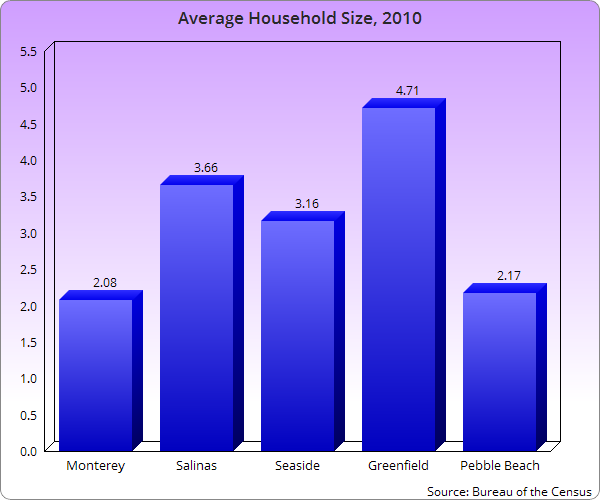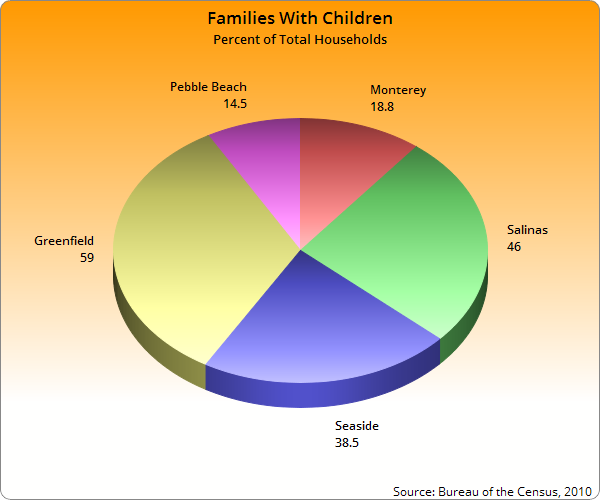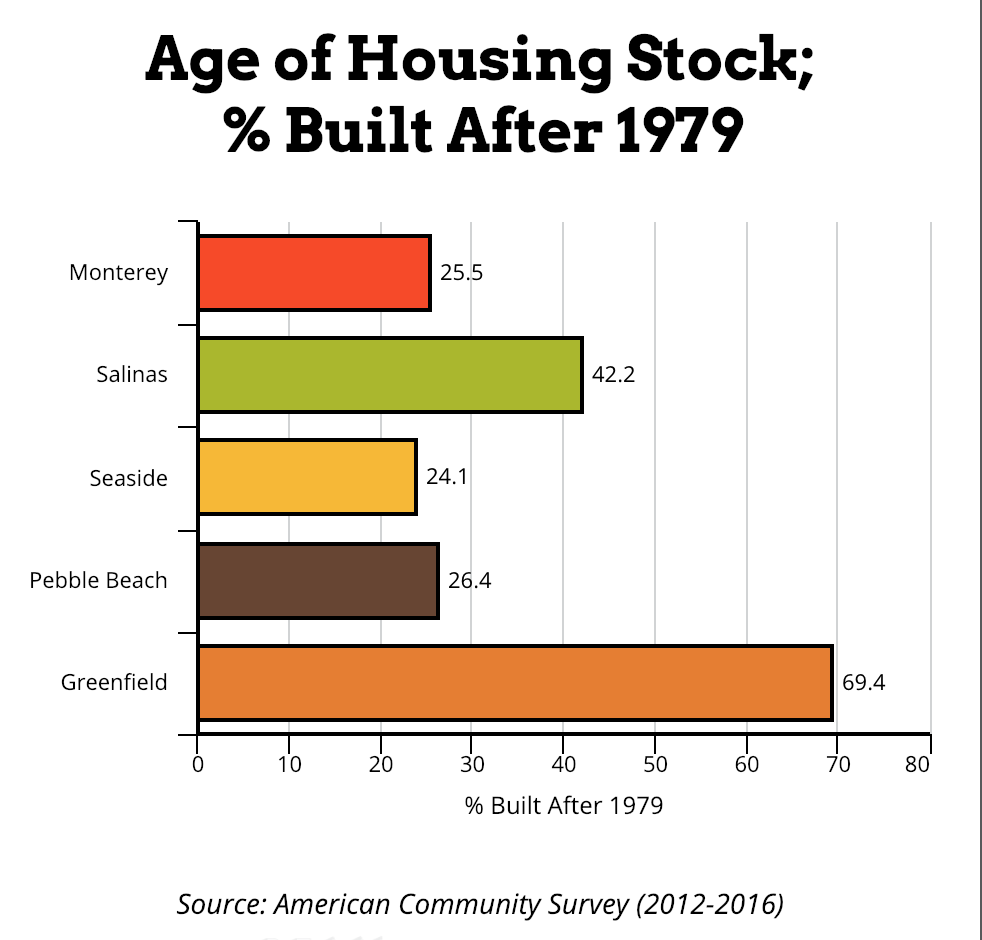TALES FROM THE HOUSING FRONT: See all the stories, or tell your own
By Joe Livernois
A public document currently circulating around city halls in Monterey County makes for some fascinating reading about the region’s economy and its impact on the people who live here.
Okay, “fascinating” is a subjective adjective, and the truth is you’d have to be a real wonk to get through this 141-page tome. But it’s worth the read if you’re trying to develop an objective view of what’s really going on in Monterey County.
The document suffers the misfortune of a mind-numbing title: “Monterey County Analysis of Impediments to Fair Housing.” Let’s face it, any work that includes the word “impediment” in its name is not likely to find its way to The New York Times best-sellers’ list. Last Thursday, when the Seaside City Council got its first review of it, Mayor Ian Oglesby referred to the report as “Impendings to Fair Housing.”
It could be argued that much of “Impediments” reads like the sort of boilerplate blather that’s standard in Big Important Government Documents and in impenetrable grant applications. And it is frustrating in its neutrality; if the writers of “Impediments” have an opinion about anything they’ve transcribed, they are keeping it to themselves.
On the other hand and for the most part, the pure numbers packed into “Impediments” validate everything you might have ever assumed about Monterey County. And by “Monterey County,” I mean the whole of Monterey County, from Pajaro to God Knows Where in South County, with Big Sur thrown in for kicks.
In a nutshell, the data included in “Impediments” reveal the drastic socioeconomic divide in Monterey County: Wealth is concentrated on the Peninsula, while all the social struggle goes on elsewhere. It doesn’t explain why or how it works out that way, but it lays it out there in numbers, percentages and statistics. And the numbers speak for themselves.
Five different “entities” teamed up to authorize the preparation of “Impediments,” including the cities of Monterey, Salinas and Seaside, as well as a group called Monterey Urban County (a collective of smaller cities like Del Rey Oaks and Greenfield), and Monterey County Housing Authority. Carmel is one of the few cities not participating in the report, an apparent acknowledgement that it doesn’t care a whit about how the poor and the middle class get along, as long as they show up to change the hotel sheets every day.
Together, the entities developed the report so they can make themselves eligible for housing money from the federal government. If they want to fix the impediments, they need to prove to the feds that impediments exist. At the moment, the cities are reviewing the document, asking the public for its opinions. The preparation of “Impediments” was farmed out to a couple of consultants, including a company called Veronica Tam & Associates from Pasadena and MIG Inc. from Berkeley.
During her public presentations about “Impediments,” Tam notes that 60 percent of the affordable housing in Monterey County is currently located in the City of Salinas, and the goal of the entities that authorized “Impediments” is to encourage cheaper housing in other regions of the county — including the Peninsula.
For the most part, the report quantifies existing conditions in Monterey County with raw numbers.
For instance, here’s something most of us have probably never thought about, yet makes perfect sense if you’ve been living in Monterey County longer than a week: A significantly higher percentage of Monterey County residents who identify themselves as “White” apply for mortgage loans. According to the “Impediments,” 42 percent of the people who applied for housing loans last year identified themselves as “White,” even though Whites make up 33 percent of the county’s total population. During that same period, “Hispanics” make up 55 percent of the population, but only 33 percent of the applicants for mortgages were Hispanic.
There might be a thousand reasons why those stark statistics are true, but “Impediments” does not go into them. Instead, the authors point out that the applicant pool for mortgage lending should reflect the region’s demographics, “When one racial/ethnic group is overrepresented or underrepresented in the total applicant pool, it could be an indicator of a possible fair housing issue,” according to the authors.
Meanwhile, we’ve also sort of known (assumed? understood?) that economic conditions are keeping lower-income families away from the Monterey Peninsula and forcing them to live in overcrowded conditions in the Salinas Valley. The report provides that proof.
The numbers show that fewer than 20 percent of households in Monterey are occupied by families with children. That percentage is 46 percent in Salinas. In communities like Pajaro and Chualar, communities with a significant population of residents who earn their livings on farms, the percentage exceeds 61 percent.
The data also indicate that families in larger households that rent are more likely to live in the Salinas Valley. And while the city of Monterey has a huge population of renters, it appears that most of them are single or have much smaller families than those who rent in the Salinas Valley.
The average size of a family living in Monterey is fewer than 2.9. In Salinas that number is 4 per household, while the number in places like Pajaro and Chualar is closer to 5. The report notes that household size varies significantly based on race. Overall, Hispanic households include 4.4 people, on average, compared to 2.7 people in White homes.
“As Greenfield, Gonzales, Salinas and some unincorporated communities had a high concentration of Hispanic households, it is likely that Hispanic household in these cities are disproportionately impacted by overcrowding,” the report’s authors report.
By the way, the median household income in Monterey is reportedly more than $68,500, compared to $46,500 in Greenfield and $52,300 in Salinas.
South County residents are earning smaller incomes and are raising larger families, which accounts for overcrowding.
In Monterey, fewer than 5 percent of the renter-occupied units were considered “overcrowded.” That’s compared to 25 percent of the units in Salinas, and 46 percent of the units in Greenfield. By way of definition, “overcrowded housing units” refers to a home in which more than one person resides per room — including dining and living rooms.
“Impediments” notes that overcrowding is “reflective” of different possible living situations. For instance, a family can double up (or triple up) with relatives to reduce their housing costs, or families live in homes too small for their size because they can’t afford anything larger.
‘Impediments” does hint that some cities are at least trying to meet the need for housing in the region, at least compared to their counterparts. The report includes statistics that show the percentage of new housing built in communities since 1979. The numbers in all Monterey County cities aren’t huge, at least when compared to what you’re likely to see in major metropolitan areas like Los Angeles or Sacramento. But they do indicate that at least some local cities have the political will to try.
Only a quarter of the 13,639 homes in the city of Monterey were built after 1979. That’s compared to places like Gonzalez and Greenfield, where more than 60 percent of the units are less than 40 years old.
Finally, renters who earn moderate wages will tell you that the housing market is driving them farther from where they work. In a lot of cases, they leave the Central Coast completely (see this week’s Voices story about teachers caught in the housing bind). But others who do stay in the region are more likely to find cheaper rentals the farther south they are willing to live in the Salinas Valley, according to the housing report.
In the end, “Impediments” might not be required reading, but it is worth a scan. Especially if you’re an elected official in Monterey County trying to understand existing discrepancies. Armed with a knowledge of the impediments, the expectation is that local leaders will generate the political will to remove them.
Have something to say about this story? Send us a letter or leave a comment below.






The City of Marina is undergoing a huge expansion of new homes. Sadly, out of the 3,000 new home constructions, none of them is affordable by the medium income level of Monterey County Residents. Single family homes and Town Homes abound in the new developments. No Condominiums! Why not require the builder to build out 10% of the planned number of homes for affordable housing? What I see is a building plan that discriminates against certain classes of people by income. Not in my backyard as some say!